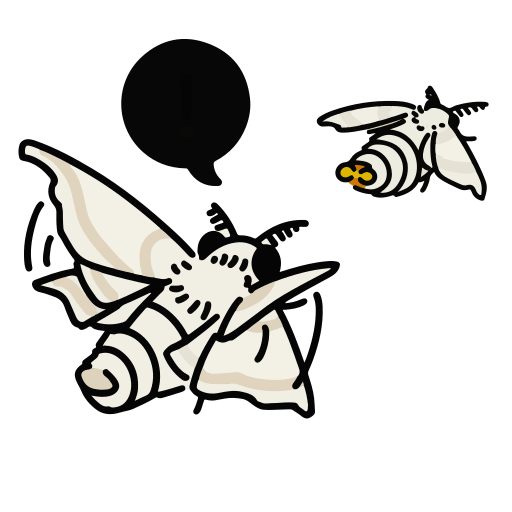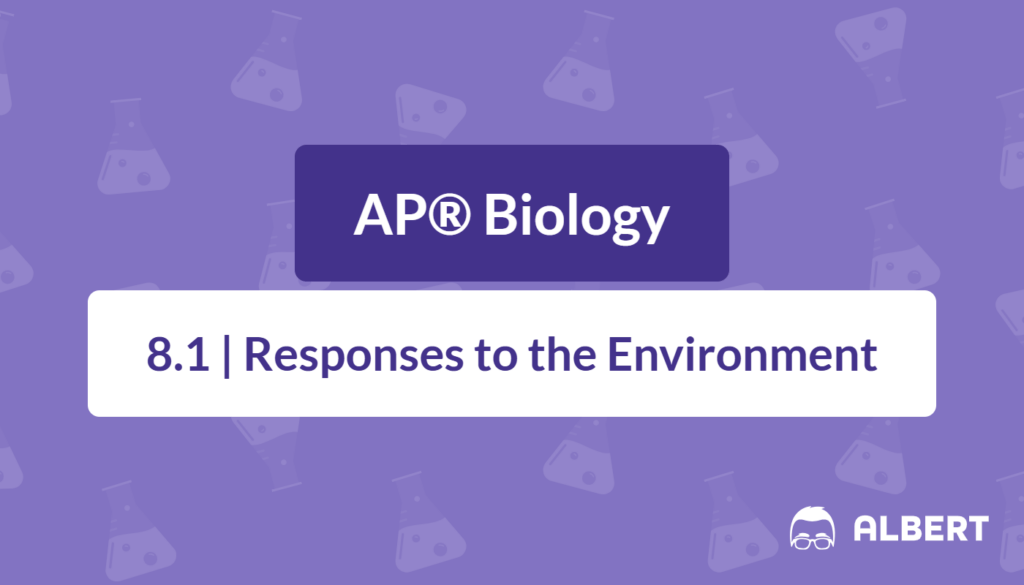Understanding how organisms respond to their surroundings is key to success in AP® Biology. This field, known as communications biology, explores how internal and external signals drive changes in behavior, physiology, and interaction. It also examines how these adaptations influence survival and evolution. Therefore, mastering these concepts helps students connect various biological principles and see the bigger picture of life’s interconnected systems.
Below is an organized review, complete with digestible explanations and examples, to assist in understanding how organisms maintain balance and communicate in response to changes in the environment.
What We Review
Introduction
Communications biology focuses on how organisms detect and react to a wide array of environmental factors, including temperature shifts, light changes, and chemical signals. Meanwhile, it also delves into interactions within groups and how these collective behaviors affect survival. Understanding these responses to the environment provides insight into the principles guiding homeostasis, natural selection, and the evolution of behaviors.
Organisms must constantly adjust to maintain stability. Any significant change in environment often triggers a cascade of behavioral or physiological responses. As a result, students who grasp this topic gain a deeper appreciation of life’s harmony and adaptability.
Understanding the Environment
A. Internal vs. External Environment
Organisms live in both internal and external environments. The internal environment includes aspects such as body temperature and blood pH. By contrast, the external environment involves factors like sunlight, temperature, and food availability. Homeostasis helps organisms keep internal conditions relatively stable.
- Internal Environment Example:
- Blood glucose level in humans must stay within a certain range. If it rises too high, insulin production helps bring the level down.
- External Environment Example:
- Plants respond to external light. They grow toward the sun to maximize photosynthesis.
Example & Step-by-Step Solution
Scenario: A person’s internal temperature is 37^\circ \text{C}, while the outside temperature falls to 10^\circ \text{C}.
- The body detects the drop in external temperature.
- The body shivers to generate heat.
- Blood vessels near the skin surface constrict, reducing heat loss.
- As a result, internal temperature is maintained at around 37^\circ \text{C}.
Practice Problem:
Imagine a lizard’s internal temperature is 29^\circ \text{C}, and it needs to absorb heat from an environment at 35^\circ \text{C}. Describe two behaviors the lizard might use to increase its body temperature.
B. Impact of Changes in Environment
A change in environment can be as simple as a rainfall or as extreme as a heatwave. Consequently, organisms must adjust quickly or risk harm. External factors such as temperature, light, and availability of nutrients often trigger noticeable adaptations. Internal factors, including hormone levels and stress responses, also shape an organism’s behavior and physiology.
- Extreme Temperature Change Example:
- When it becomes very hot, humans sweat to cool down.
- Hormonal Change Example:
- Increased adrenaline in the bloodstream prepares muscles for quick action.
Behavioral Responses to Environmental Changes
A. What is a Behavioral Response?
A behavioral response is any action an organism takes to cope with a change in environment. These actions are frequently observed in the wild, where animals might seek shade on a hot day or move closer to a water source during a drought. Such responses ensure organisms remain safe and comfortable, supporting survival and reproduction.
Example & Step-by-Step Solution
Example: A bird senses cold weather approaching and decides to migrate south.
- Bird detects falling temperatures and shorter daylight hours.
- Internal cues, such as hormone changes, intensify the urge to migrate.
- The bird joins others in flight toward a warmer region.
- Behavioral response (migration) enhances survival by avoiding harsh winter conditions.
Practice Problem:
A honeybee hive faces sudden heat stress on a 40°C day. List one immediate behavioral response and explain how it helps cool the hive.
B. Types of Behavioral Responses
Behavioral responses are classified as innate or learned. Innate behaviors are pre-programmed instincts, such as ducks following their mother soon after hatching. Learned behaviors develop through experience, like a dog learning to ring a bell for dinnertime.
- Innate Behaviors:
- Reflexes (e.g., blinking when something approaches the eye).
- Fixed action patterns (e.g., beak-pecking in certain bird species).
- Learned Behaviors:
- Habituation (organisms learn to ignore repeated, harmless stimuli).
- Problem-solving (chimpanzees stacking boxes to reach bananas).
Physiological Responses to Environmental Changes
A. What are Physiological Responses?
Physiological responses occur within an organism’s body to restore optimal internal conditions. These responses often involve hormones, enzymes, or cellular activities. For instance, in humans, the pancreas secretes insulin to regulate blood sugar. Meanwhile, some plants open and close stomata to manage gas exchange during photosynthesis.
Example & Step-by-Step Solution
Scenario: A person exercises intensely, leading to an increase in blood carbon dioxide levels from 40 \text{ mmHg} to 45 \text{ mmHg}.
- Receptors in the body detect the rise in CO₂.
- The brain’s respiratory center is activated.
- Breathing rate increases to release more CO₂.
- CO₂ levels return to normal, maintaining homeostasis.
Practice Problem:
An athlete’s body temperature reaches 39^\circ \text{C}. Explain two physiological mechanisms that help return it to 37^\circ \text{C}.
B. Mechanisms of Physiological Responses
Homeostasis is the process by which organisms keep their internal environment stable. It controls vital factors such as temperature and pH. In mammals, thermoregulation relies on shivering, sweating, and adjusting blood flow. Plants rely on precise control of stomata to balance water loss with carbon dioxide intake. Therefore, these mechanisms ensure survival in diverse conditions.
Communication in Organisms
A. How Do Organisms Communicate?
Communication is crucial for survival and reproduction. Organisms share information with others to find mates, locate food, and avoid predators. Therefore, many species rely on signals—visual, audible, chemical—to convey messages effectively.
- Bird Calls:
- Different calls warn of predators or signal food availability.
- Firefly Light Signals:
- Flash patterns attract mates and sometimes deter rivals.
B. Types of Signaling Mechanisms

- Visual signals – Body language or color changes (e.g., a chameleon changing color).
- Audible signals – Calls and songs (e.g., whale songs).
- Tactile signals – Physical contact (e.g., grooming in primates).
- Chemical signals – Pheromones used by insects for mating or territory marking.
- Electrical signals – Electric fish generating fields to communicate location.
Example & Step-by-Step Solution
Consider a population of n animals using direct contacts. The potential communication channels among them can be calculated using the formula: \frac{n(n-1)}{2}
Step-by-step for n = 5:
- Substitute n = 5 into the formula.
- Calculate \frac{5 \times (5 - 1)}{2}.
- Simplify \frac{5 \times 4}{2} = \frac{20}{2} = 10.
- So there are 10 possible communication channels.
Practice Problem:
Calculate the number of communication channels if there are 6 animals in a colony. Show each step clearly.
Group Behavior in Biology
A. What is Group Behavior?
Group behavior in biology refers to how individuals of the same species act collectively. Examples include schools of fish, flocks of birds, and herds of mammals. When asked “what is group behavior in biology?,” the simplest answer is group behavior occurs when organisms move or work together. Such cooperation often improves protection, food gathering, and reproductive success.
B. Benefits of Cooperation
Cooperative behaviors allow organisms to share tasks, defend each other, and hunt more effectively. For instance, a wolf pack can take down larger prey than a single wolf. This collaboration not only boosts survival but also increases the chance of passing on genes to future generations.
Example & Step-by-Step Solution
Example: A pride of lions works cooperatively to hunt a zebra.
- Lions surround the prey, each lion taking a strategic position.
- They chase the zebra, funneling it toward a specific lion.
- Using combined strength, they capture the zebra.
- Food is shared among the pride, ensuring all benefit from the hunt.
Practice Problem:
Describe one advantage and one potential disadvantage of group hunting in orcas (killer whales).
Natural Selection and Behavioral Responses
A. The Connection Between Behavior and Fitness
Behavioral responses influence an organism’s fitness, which is its ability to survive and reproduce. If a behavioral response increases the likelihood of leaving viable offspring, that behavior becomes more common in succeeding generations. Therefore, successful traits spread since they help organisms adjust to changing environments.
- Mating Rituals Example:
- Vibrant displays and dances help birds attract mates, increasing reproductive success.
- Foraging Strategies Example:
- Bees performing a “waggle dance” to guide hive-mates to food sources.
B. Evolutionary Perspective on Communication
Communication often evolves to improve a species’ survival rate. Examples include wolves learning more effective pack formation over generations or ants refining chemical trails for food gathering. Over time, behaviors that facilitate cooperation and group survival become more prevalent. Consequently, these improvements highlight the role of natural selection in shaping the way species communicate.
Quick Reference Chart: Key Vocabulary
| Term | Definition |
| Homeostasis | The ability of an organism to maintain stable internal conditions despite changes in the environment. |
| Behavioral response | An observable reaction of an organism to internal or external stimuli. |
| Innate behavior | Instinctual responses that an organism is born with. |
| Learned behavior | Responses developed through experience and interaction with the environment. |
| Signaling behavior | Behaviors used to convey information between organisms. |
| Pheromones | Chemical signals released by organisms to communicate with others of the same species. |
| Cooperative behavior | Group actions that benefit individuals and enhance population survival. |
Conclusion
Organisms respond to the environment through intricate networks of behavioral and physiological changes. These responses preserve homeostasis, improve survival, and increase the likelihood of producing the next generation. Communication, whether through visual display or chemical signals, underpins many of these responses. Furthermore, groups often work together to achieve outcomes beyond the capacity of solitary individuals.
Recognizing the roles of communication and behavior emphasizes the wonder of biological systems. Studying how these responses arise and evolve encourages a greater appreciation for the delicate balance holding ecosystems together. Therefore, a solid grasp of communications biology helps students excel in AP® Biology and deepens their insight into the natural world.
Sharpen Your Skills for AP® Biology
Are you preparing for the AP® Biology test? We’ve got you covered! Try our review articles designed to help you confidently tackle real-world math problems. You’ll find everything you need to succeed, from quick tips to detailed strategies. Start exploring now!
Need help preparing for your AP® Biology exam?
Albert has hundreds of AP® Biology practice questions, free response, and full-length practice tests to try out.








